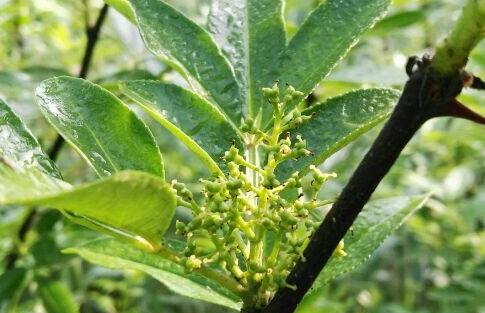Can bayberry trees be planted in the north? How do you plant it? How to control diseases and insect pests? What kind of medicine should I take?
Myrica rubra, also known as Shengmei, Baidimei, Shumei, belongs to Myrica rubra family small trees or shrubs, with high medicinal and edible value. Can you grow bayberry trees in the north? How? How to control pests? What drugs?
Can you grow red bayberry trees in the north?
Myrica rubra is not suitable for growing in the north. Because the basic moisture conditions and temperatures in the north cannot be reached, even if there is, it is impossible to grow normally. Myrica rubra likes a warm, humid, cloudy climate. Intolerant of strong light, not cold. Mountain north or east, deep soil layer, loose fertile, good drainage acid soil planting is appropriate.
How to grow bayberry?
1) The planting time. Spring planting and autumn planting. Spring planting is from February to early April, autumn planting is from September to November. Spring planting is generally good. Yunnan, Guizhou, Guangxi, Sichuan, Hunan, Jiangxi, Guangdong and Fujian can also be planted from October to late March of the following year.
2. Planting density. It is advisable to plant 33 ~42 plants per mu with row spacing of 4m×4m or 4m×5m. The ratio of male to female is 100:1. If there are wild Myrica rubra in the area, male plants can not be matched.
3. Apply basal fertilizer. Planting holes 80×80×60cm, applying compost 50kg or manure 25-30kg or cake fertilizer 3- 4 kg per hole, adding calcium superphosphate 1kg, covering with fertile topsoil 15-20cm thick.
4. Planting. When planting, the seedlings are placed in the center of the hole, the root system is stretched, the seedlings are righted, and then fine soil is added, and the seedlings are tamped with a foot or a hoe. Pouring enough root fixing water, covering the top with subsoil 20-30cm higher than the ground, and covering the joint under the ground is appropriate. After seedling planting, the high temperature season in July and August should be loosened, watered and covered in time to reduce water evaporation.
How to prevent and control red bayberry pests? What drugs?
1. The main disease of Myrica rubra is brown spot, also known as anthracnose, which is an important disease that damages the leaves of Myrica rubra. Serious disease causes a large number of leaves, causing insufficient nutrition of the tree, and finally leads to the decline of fruit quality. The pathogen overwinters in ascocarp in diseased leaves, and the disease occurs in late March to early April of the next year. The disease is more serious in plots shaded by tree crown, insufficient sunlight, poor soil, lack of potassium fertilizer and organic fertilizer.
Control methods:
(1) Clear the garden. Autumn and winter season, combined with pruning, concentrated burning or deep burial of diseased leaves, disease branches.
(2) Strengthen cultivation management: In the management of growing season, the management of soil, fertilizer and water should be strengthened reasonably, and the ventilation and light transmission conditions of trees should be improved in combination with pruning. (3) Spray control: At the early stage of disease, i.e. after flowering, spray 1500g of Bome 1 degree stone sulfur mixture per mu for control.
2. Whitefly is the main pest of Myrica rubra, which damages young shoot leaves, and occurs more seriously in June and July.
Control methods:
(1) Protect and utilize natural enemies such as ladybugs and wasps, and implement insect control.
(2) During winter and spring pruning, cut off dead branches and branches with high insect density, and burn them intensively to reduce insect sources.
(3) Spraying control: In July when the pest occurs seriously, spraying 4.5% cypermethrin EC per mu can achieve good results.
Time: 2019-04-08 Click:
- Prev

"Rutaceae" what diseases and insect pests does Zanthoxylum bungeanum have? What are the symptoms? What are the prevention and control methods?
Zanthoxylum bungeanum is a kind of tree species with high economic value, which has high medicinal and edible value. It is an important plant. What diseases does Zanthoxylum bungeanum have? What are the prevention and control methods of diseases and insect pests? During the growth and development of Zanthoxylum bungeanum bungeanum, due to environmental discomfort or damage by pathogens
- Next

Solanaceae plant tomato (tomato) how much is the market price per jin? What kind of variety is good for soilless cultivation? When will you plant it?
Tomato, also known as tomato and persimmon, is a common fruit in China. It is very popular because it is rich in vitamins, carotene and trace elements.
Related
- Fuxing push coffee new agricultural production and marketing class: lack of small-scale processing plants
- Jujube rice field leisure farm deep ploughing Yilan for five years to create a space for organic food and play
- Nongyu Farm-A trial of organic papaya for brave women with advanced technology
- Four points for attention in the prevention and control of diseases and insect pests of edible fungi
- How to add nutrient solution to Edible Fungi
- Is there any good way to control edible fungus mites?
- Open Inoculation Technology of Edible Fungi
- Is there any clever way to use fertilizer for edible fungus in winter?
- What agents are used to kill the pathogens of edible fungi in the mushroom shed?
- Rapid drying of Edible Fungi

